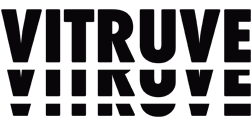9 de October de 2025
The Importance of Measuring CTL, ATL, TSB, and TSS
In elite performance training, precision matters. Every session, recovery day, and tapering block contributes to the athlete’s long-term adaptation. But how can you quantify that balance between fitness and fatigue? That’s where four key metrics come into play: TSS (Training Stress Score), CTL (Chronic Training Load), ATL (Acute Training Load), and TSB (Training Stress Balance).
Understanding these numbers is essential for building sustainable progress — and avoiding overtraining, under-recovery, or plateau. Let’s break them down.
What are TSS, CTL, ATL, and TSB?
Training Stress Score (TSS) quantifies the physiological demand of a single workout by combining intensity and duration. It’s the foundation of the load model — the unit that defines how much stress you’re placing on your body.
From TSS, we derive two critical metrics:
- Acute Training Load (ATL) – The short-term training load, typically calculated over the last seven days. It represents your current fatigue level — the stress your body is still recovering from.
- Chronic Training Load (CTL) – The long-term training load, usually averaged over the past six weeks. It indicates your overall fitness or conditioning level, showing how well your body has adapted to sustained training stress.
Finally, the Training Stress Balance (TSB) represents the difference between CTL and ATL:
TSB = CTL – ATL
A positive TSB suggests you’re well-rested and ready to perform; a negative TSB means you’re accumulating fatigue and might need recovery or a deload week.
These metrics form the performance management model, used by coaches to plan periodization phases, taper effectively, and optimize readiness for competition.
Why measuring them matters
Tracking CTL, ATL, and TSB isn’t about chasing numbers — it’s about understanding your body’s response to stress. Here’s why they’re crucial:
- Balance between fitness and fatigue
CTL represents your capacity, while ATL shows your current fatigue. If ATL rises too fast compared to CTL, you risk overreaching. If CTL stagnates, your fitness may decline. Monitoring both ensures a sustainable rate of adaptation. - Improved training decisions
By analyzing these trends, coaches can identify when to push for overload and when to back off. For instance, if an athlete’s CTL is climbing steadily but TSB remains deeply negative, it’s time for a recovery block. - Smarter tapering
Before competition, CTL should remain relatively stable while ATL decreases — allowing TSB to rise. That’s how you achieve the ideal balance of freshness and form on race day. - Reduced injury risk
Abrupt spikes in ATL or CTL increase injury likelihood. Using these metrics helps you structure progressive overload safely, maintaining a positive long-term trajectory without crossing the red line.

How to use CTL, ATL, and TSB in practice
Think of these numbers as a feedback loop for your programming:
- TSS → quantifies your workload per session.
CTL → shows how your body adapts to that workload. - ATL → shows how much fatigue you’re carrying.
- TSB → tells you when you’re ready to perform.

When paired with velocity-based training (VBT), these metrics become even more actionable. Velocity tracking allows you to identify neuromuscular fatigue within a single session — the micro-level view — while CTL and ATL provide the macro perspective over weeks.
This dual-layer monitoring lets coaches fine-tune not only the volume and intensity of training but also the quality of execution rep by rep.
Integrating data through technology
Modern strength and conditioning isn’t just about intuition — it’s about data integration. Devices like the Vitruve Encoder measure bar velocity with precision, providing real-time feedback that complements long-term load metrics like CTL and ATL.
At the same time, tools such as the Vitruve AMS (Athlete Management System) help coaches centralize all performance data — load, fatigue, readiness, and recovery — into a single platform. This integration bridges the gap between day-to-day monitoring and strategic periodization.
By combining velocity-based metrics with training load analysis, coaches gain a 360° view of athlete performance: from what happens inside the gym to how it accumulates across weeks and months.
Final thoughts
Measuring CTL, ATL, TSB, and TSS allows athletes and coaches to quantify the invisible side of performance: adaptation. These numbers tell the story of your training journey — when you’re improving, when you’re overloaded, and when you’re primed to perform.
Used together with Vitruve’s ecosystem — from the Workout Builder to the Vitruve Encoder and Vitruve AMS — they transform data into direction.
Because performance isn’t about doing more — it’s about doing what matters, when it matters most.
